- Two Pakistan towns face flood risk if river barrage crumbles, officials say Reuters
- Rain in Lahore and Various Parts of Punjab: Punjab Police on High Alert Amid Possible Flood Threat punjabpolice.gov.pk
- Live Updates: Pakistan floods 2025 Dawn
- Heartland under water siege The Express Tribune
- Abdul Aleem Khan urges national unity to tackle floods and unprecedented challenges ptv.com.pk
Blog
-
Two Pakistan towns face flood risk if river barrage crumbles, officials say – Reuters
-
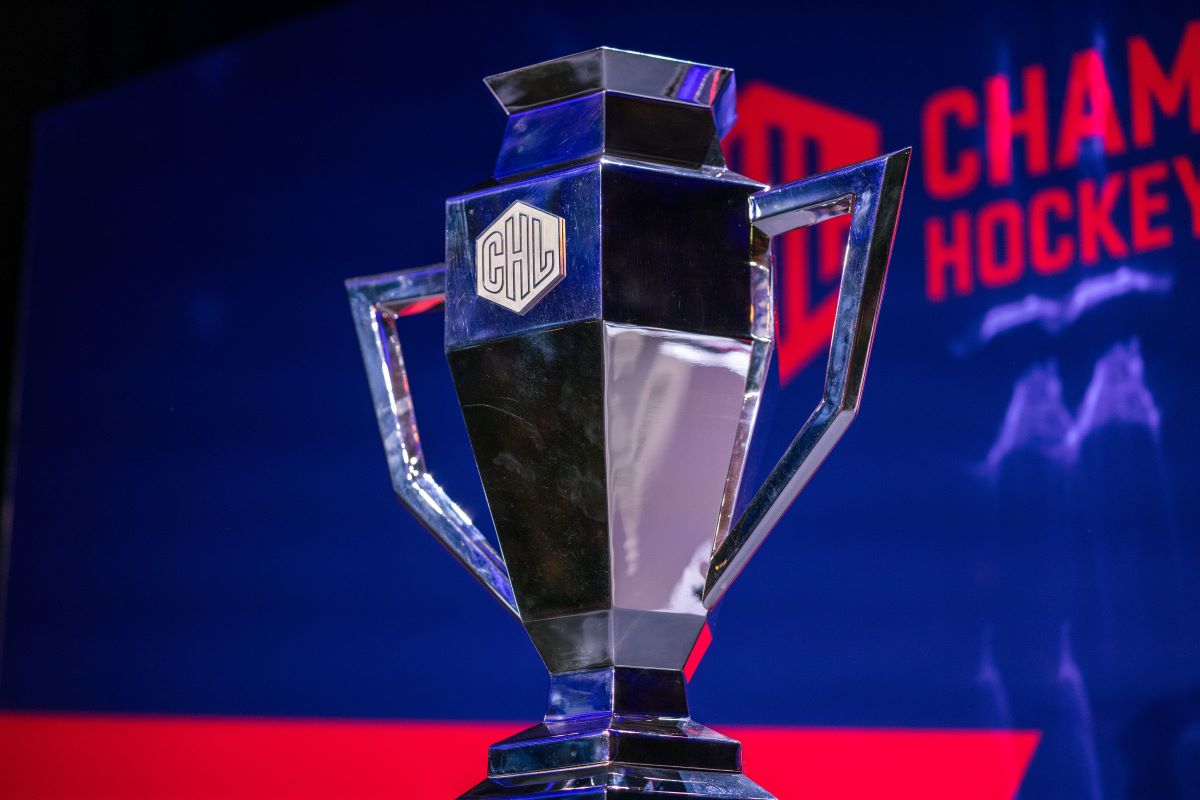
CHL season 11 starts today
Teams and players
This season, once again, 24 teams from 10 different European leagues will compete for the title. This will be the third season of the CHL’s “groupless” format, meaning each team will play six games against six different opponents, which were determined at the regular season draw during the 2025 IIHF World Championship in Stockholm.
- Switzerland: ZSC Lions Zurich (CHL & national champions), Lausanne HC (regular season winner), SC Bern (regular season 3rd place), EV Zug (regular season 4th place).
- Austria/ICE Hockey League: Red Bull Salzburg (national champion), KAC Klagenfurt (regular season winner), HC Bolzano (Italy, regular season 3rd place).
- Czechia: Kometa Brno (national champions), Sparta Prague (regular season winner), Mountfield Hradec Kralove (regular season 2nd place).
- Finland: KalPa Kuopio (national champion), Lukko Rauma (regular season winner), Ilves Tampere (regular season 2nd place).
- Germany: Eisbaren Berlin (national champion), ERC Ingolstadt (regular season winner), Pinguins Bremerhaven (regular season 3rd place).
- Sweden: Lulea Hockey (national champion), Brynas Gavle (regular season winner), Frolunda Gothenburg (regular season 3rd place).
- Challenger leagues (national champions only): Odense Bulldogs (Denmark), Grenoble (France), Storhamar Hamar (Norway), GKS Tychy (Poland), Belfast Giants (EIHL).
Among the more interesting match-ups of the regular season, Sparta Prague will host Frolunda Gothenburg in a rematch of the 2016-17 CHL final on 6 September. That 4-3 overtime win is one of four titles for Frolunda, which was by far the most successful team of the CHL’s first decade.“The one I remember most is the final we won at home against Red Bull Munich (in 2019),” recalled Frolunda captain Max Friberg, who is about to play in his sixth CHL season. “On the road, too, our second CHL title, we had some great comebacks, but the final at home was for sure the best one.”
Frolunda, Zurich and EV Zug will all be participating in their ninth CHL seasons, one behind Red Bull Salzburg, which is representing Austria a record 10th time. At the other end of the spectrum, the Danish champion Odense Bulldogs are set to make their CHL debut.
“I think it’s a great opportunity for our fans and the club in general to experience some of the best hockey in Europe,” said Bulldogs head coach Jason O’Leary. “I think it’s very exciting for everyone and we’re looking forward to it.”
As is always the case, the CHL will feature some of the biggest names in European hockey that should be familiar to fans around the world.
Zurich’s roster includes two former CHL MVPs in Sven Andrighetto from last season and Czech goaltender Simon Hrubec from 2017/18. The team’s roster also includes Denis Malgin, Yanick Weber and Austrian prospect Vinzenz Rohrer. Elsewhere in Switzerland, EV Zug boasts some veteran talent in goaltender Leonardo Genoni, defenceman Raphael Diaz and forwards Tomas Tatar and Dominik Kubalik. And Lausanne HC has Erik Brannstrom, Austin Czarnik and Dominik Kahun.
In Sweden, Brynas’ roster features some pretty big star power in veteran forwards Nicklas Backstrom and Jacob Silfverberg, defenceman Robert Hagg and the goaltending duo of American Collin Delia and Italian Damian Clara.
In Finland, Ilves Tampere’s roster includes veteran Swede Carl Klingberg and young Czech prospect Ondrej Kos. While Lukko Rauma features newly acquired local boy Antti Raanta in goal.
Other notable names on other CHL teams include brothers Thomas and Raffl with Red Bull Salzburg and veteran Slovenes Ziga Jeglic, Jan Urbas and Miha Verlic in Bremerhaven.
Continue Reading
-
French finance minister sees no risk of financial crisis, despite political woes – Reuters
- French finance minister sees no risk of financial crisis, despite political woes Reuters
- France on the brink: how a budget deficit became a political crisis The Guardian
- France may need IMF bailout, warns finance minister The Telegraph
- Poll shows majority of French people want parliament dissolved and new election trtworld.com
- Macron gives ‘full support’ to embattled French PM Bayrou ahead of confidence vote WION
Continue Reading
-

Skin Cancer and Occupational Risk: Implications for Dutyholders and Insurers : Clyde & Co
In May 2025, the IARC (International Agency for Research on Cancer) published the results of a new study updating global estimates of cutaneous melanoma cases attributable to ultraviolet radiation (UVR). The study found that skin cancer cases are on the rise, with an estimated 267,000 melanoma cases globally in 2022 caused by UVR.
Skin cancer (both melanoma and non-melanoma) is the most diagnosed cancer worldwide. In the UK (2017–2019) there were 17,537 new cases of melanoma skin cancer, and in 2016–2018 there were 155,985 new cases of non-melanoma skin cancer (Cancer Research UK).
Global and UK Trends
Scientists from the IARC found that more than 80% of cutaneous melanoma (CM) cases worldwide in 2022 were attributable to UVR exposure. CM accounted for around 331,700 cancer cases globally in 2022.
UVR is a major risk factor for CM. It is the most common form of melanoma, developing in melanocytes – the pigment-producing cells in the skin. It is also the most aggressive form of skin cancer, with potential to spread if not detected and treated early.
Other risk factors include age, pale skin, a high number of moles, and a family history of skin cancer.
In the UK, melanoma skin cancer is the 5th most common cancer overall. Since the early 1990s, incidence rates have risen by around 147% (2.5 times). Over the last decade, rates increased by almost a third (31%) and are projected to rise by a further 9% between 2023 and 2040 (Cancer Research UK).
The British Medical Journal (Skin cancer prevention and sunscreens, 25 July 2025) also reported that deaths from melanoma are projected to increase by about 68% from 2020 to 2040.
Advances in Research
Building on earlier IARC Global Cancer Observatory data, researchers improved accuracy by adjusting for acral lentiginous melanoma – a subtype not associated with UVR exposure, but accounting for about half of CM cases in darker-skinned groups.
The study concluded that most of the global CM burden in 2022 was UVR-attributable.
Implications for Defendants and Insurers
With both UK and global temperatures and skin cancer cases on the rise, there is clear potential for an increase in claims from outdoor workers. Claimant firms are already actively advertising for UVR-related occupational skin cancer claims.
There is also potential exposure under public liability (PL) claims, for example from sports fields, school playgrounds, and construction site operators.
Prevention and Employer Duties
Primary prevention through increased sun-safety awareness and provision of protection remains key to reducing CM. Employers should:
- Carry out risk assessments for outdoor workers
- Provide training and education on sun exposure risks
- Supply adequate sun protection and encourage regular sunscreen use
Regular sunscreen use can prevent melanoma and squamous cell carcinoma, though effectiveness depends on application, coverage, and reapplication.
HSE Guidance
The HSE highlights UVR as a significant risk for outdoor workers, particularly in construction. Its guidance (“Cancer and Construction: Skin Cancers” and “Skin at Work: Outdoor Workers and Sun Exposure”) identifies at-risk groups including farm and construction workers, market gardeners, outdoor activity staff, and certain public service workers.
Recommendations include:
- Wearing protective clothing and wide-brimmed/flap hats
- Staying in shade during breaks and peak sun hours
- Using high-factor sunscreen (SPF 15+) on exposed skin
- Drinking plenty of water
- Checking skin regularly for unusual moles
- Considering work rotation to cooler parts of the day
- Providing sunscreen at exits to outdoor areas as a reminder
Causation and Legal Challenges
As with most occupational cancers, causation in skin cancer claims is complex.
Skin cancer is considered an indivisible condition for causation purposes. Whether the “but for” test or the “material contribution” test applies will depend on the melanoma type diagnosed.
If the Court applies the material contribution approach, claimants must prove both:
- Generic causation: that the breach was capable of causing the injury
- Individual causation: that the breach in fact made a contribution that was more than minimal
Given that melanoma may have multiple causes (idiopathic, UVR, chemical exposure), combined with inevitable non-work UVR exposure (e.g. lifetime sun exposure), proving causation remains a significant hurdle for claimants.
Outlook
With UK heatwaves intensifying and melanoma cases continuing to rise, this is an area that defendants, insurers, and employers should monitor closely for developments.
Clyde & Co are specialists in dealing with a wide variety of disease claims, and we closely monitor developments around related topics. For more on this subject, you can read all of our previous articles here, and if you have any questions about this topic you can contact Barbara Goddard or any of our Occupational Disease and Legacy Claims team.
Continue Reading
-
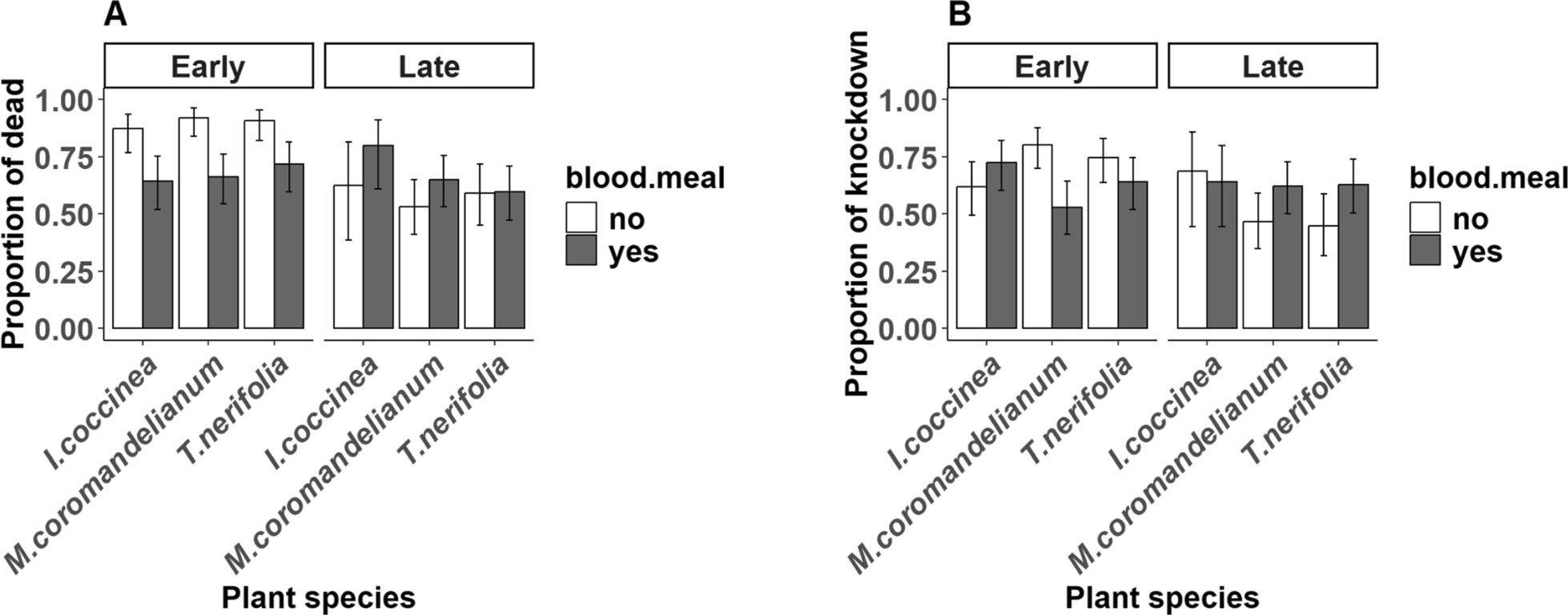
Effects of the diet of the mosquito Anopheles gambiae on its resistance to deltamethrin | Malaria Journal
Edi CAV, Koudou BG, Bellai L, Adja AM, Chouaibou M, Bonfoh B, et al. Long-term trends in Anopheles gambiae insecticide resistance in Côte d’Ivoire. Parasit Vectors. 2014;7: 500.
Google Scholar
WHO. World malaria report. Geneva: World Health Organization; 2023. p. 2023.
Ibrahim EA, Wamalwa M, Odindi J, Tonnang HEZ. Insights and challenges of insecticide resistance modelling in malaria vectors: a review. Parasit Vectors. 2024;17:174.
Google Scholar
Kulma K, Saddler A, Koella JC. Effects of age and larval nutrition on phenotypic expression of insecticide-resistance in Anopheles mosquitoes. PLoS ONE. 2013;8: e58322.
Google Scholar
Glunt KD, Oliver SV, Hunt RH, Paaijmans KP. The impact of temperature on insecticide toxicity against the malaria vectors Anopheles arabiensis and Anopheles funestus. Malar J. 2018;17:131.
Google Scholar
Oliver SV, Lyons CL, Brooke BD. The effect of blood feeding on insecticide resistance intensity and adult longevity in the major malaria vector Anopheles funestus (Diptera: Culicidae). Sci Rep. 2022;12:3877.
Google Scholar
Rivero A, Magaud A, Nicot A, Vézilier J. Energetic cost of insecticide resistance in Culex pipiens mosquitoes. J Med Entomol. 2011;48:694–700.
Google Scholar
Oliver SV, Brooke BD. The role of oxidative stress in the longevity and insecticide resistance phenotype of the major malaria vectors Anopheles arabiensis and Anopheles funestus. PLoS ONE. 2016;11: e0151049.
Google Scholar
Champion CJ, Xu J. Redox state affects fecundity and insecticide susceptibility in Anopheles gambiae. Sci Rep. 2018;8:13054.
Google Scholar
Adhikari K, Khanikor B. Gradual reduction of susceptibility and enhanced detoxifying enzyme activities of laboratory-reared Aedes aegypti under exposure of temephos for 28 generations. Toxicol Rep. 2021;8:1883–91.
Google Scholar
Hernandez EP, Anisuzzaman AM, Kawada H, Kwofie KD, Ladzekpo D, et al. Ambivalent roles of oxidative stress in triangular relationships among arthropod vectors, pathogens and hosts. Antioxidants. 2022;11:1254.
Google Scholar
Paré PSL, Hien DFDS, Bayili K, Yerbanga RS, Cohuet A, Carrasco D, et al. Natural plant diet impacts phenotypic expression of pyrethroid resistance in Anopheles mosquitoes. Sci Rep. 2022;12(1): 21431.
Google Scholar
Kouadio F-PA, Wipf NC, Nygble AS, Fodjo BK, Sadia CG, Vontas J, et al. Relationship between insecticide resistance profiles in Anopheles gambiae sensu lato and agricultural practices in Côte d’Ivoire. Parasit Vectors. 2023;16: 270.
Google Scholar
Fodjo BK, Koudou BG, Tia E, Saric J, et al. Insecticides resistance status of in areas of varying agrochemical use in Côte d’Ivoire. Biomed Res Int. 2018;18:2874160.
WHO. Manual for monitoring insecticide resistance in mosquito vectors and selecting appropriate interventions. Genève: World Health Organization; 2022.
R Core Team. R: A Language and Environment for Statistical Computing. Vienna: R Foundation for Statistical Computing; 2024.
Fox J, Weisberg S. An R companion to applied regression, 3rd Edn. https://www.john-fox.ca/Companion/
Machani MG, Ochomo E, Sang D, Bonizzoni M, Zhou G, Githeko AK, et al. Influence of blood meal and age of mosquitoes on susceptibility to pyrethroids in Anopheles gambiae from Western Kenya. Malar J. 2019;18:112.
Google Scholar
Gangaram S, Naidoo Y, Dewir YH, El-Hendawy S. Phytochemicals and biological activities of Barleria (Acanthaceae). Plants. 2021;11:82.
Google Scholar
Parachnowitsch AL, Manson JS, Sletvold N. Evolutionary ecology of nectar. Ann Bot. 2019;123:247–61.
Google Scholar
Nicolson SW. Sweet solutions: nectar chemistry and quality. Philos Trans R Soc Lond B Biol Sci. 2022;377: 20210163.
Google Scholar
Chalcoff VR, Aizen MA, Galetto L. Nectar concentration and composition of 26 species from the temperate forest of South America. Ann Bot. 2006;97:413–21.
Google Scholar
Njoroge TM, Calla B, Berenbaum MR, Stone CM. Specific phytochemicals in floral nectar up-regulate genes involved in longevity regulation and xenobiotic metabolism, extending mosquito life span. Ecol Evol. 2021;11:8363–80.
Google Scholar
Manda H, Gouagna LC, Nyandat E, Kabiru EW, Jackson RR, Foster WA, et al. Discriminative feeding behaviour of Anopheles gambiae s.s. on endemic plants in western Kenya. Med Vet Entomol. 2007;21(1):103–11.
Google Scholar
Hien DFDS, Dabiré KR, Roche B, Diabaté A, Yerbanga RS, Cohuet A, et al. Plant-mediated effects on mosquito capacity to transmit human malaria. PLoS Pathog. 2016;12: e1005773.
Google Scholar
Rodríguez MM, Bisset JA, Fernández D. Determination in vivo of the role of esterase and glutathione transferase enzymes in pyrethroid resistance of Aedes aegypti (Diptera: Culicidae). Rev Cubana Med Trop. 2007;59:209–12.
Google Scholar
Martinez-Sobrido L, Toral FA. New advances on Zika Virus Research. MDPI; 2019. https://books.google.com/books/about/New_Advances_on_Zika_Virus_Research.html?hl=&id=z86PDwAAQBAJ
Oliveira JHM, Gonçalves RLS, Lara FA, Dias FA, Gandara ACP, Menna-Barreto RFS, et al. Blood meal-derived heme decreases ROS levels in the midgut of Aedes aegypti and allows proliferation of intestinal microbiota. PLoS Pathog. 2011;7: e1001320.
Google Scholar
Briegel H, Lea AO. Relationship between protein and proteolytic activity in the midgut of mosquitoes. J Insect Physiol. 1975;21(9):1597–604.
Google Scholar
Esquivel CJ, Cassone BJ, Piermarini PM. A de novo transcriptome of the Malpighian tubules in non-blood-fed and blood-fed Asian tiger mosquitoes Aedes albopictus: insights into diuresis, detoxification, and blood meal processing. PeerJ. 2016;4: e1784.
Google Scholar
Chouaibou MS, Chabi J, Bingham GV, Knox TB, et al. Augmentation de la sensibilité aux insecticides avec le vieillissement des moustiques sauvages Anopheles gambiae de Côte d’Ivoire. BMC Infect Dis. 2012;12:214.
Google Scholar
Lines JD, Nassor NS. DDT resistance in Anopheles gambiae declines with mosquito age. Med Vet Entomol. 1991;5:261–5.
Google Scholar
Mbepera S, Nkwengulila G, Peter R, Mausa EA, Mahande AM, Coetzee M. The influence of age on insecticide susceptibility of Anopheles arabiensis during dry and rainy seasons in rice irrigation schemes of Northern Tanzania. Malar J. 2017;16:364.
Google Scholar
Hodjati MH, Curtis CF. Evaluation of the effect of mosquito age and prior exposure to insecticide on pyrethroid tolerance in Anopheles mosquitoes (Diptera : Culicidae). Bull Entomol Res. 1999;89:329–37.
Jones CM, Sanou A, Guelbeogo WM, Sagnon N, Johnson PC, Ranson H. Aging partially restores the efficacy of malaria vector control in insecticide-resistant populations of Anopheles gambiae s.l. from Burkina Faso. Malar J. 2012;11: 24.
Google Scholar
Murataliev MB, Guzov VM, Walker FA, Feyereisen R. P450 reductase and cytochrome b5 interactions with cytochrome P450: effects on house fly CYP6A1 catalysis. Insect Biochem Mol Biol. 2008;38:1008–15.
Google Scholar
Zhu YC, Caren J, Reddy GVP, Li W, Yao J. Effect of age on insecticide susceptibility and enzymatic activities of three detoxification enzymes and one invertase in honey bee workers (Apis mellifera). Comp Biochem Physiol C Toxicol Pharmacol. 2020;238: 108844.
Google Scholar
Durak R, Dampc J, Kula-Maximenko M, Mołoń M, Durak T. Changes in antioxidative, oxidoreductive and detoxification enzymes during development of aphids and temperature increase. Antioxidants. 2021;10: 1181.
Google Scholar
Continue Reading
-

Rouda Alserkal on the pressures of being a 16-year-old chess grandmaster
By Luke Tyson
Rouda Alserkal on the pressures of being a 16-year-old chess grandmaster Aug 28 – Last November, in round eight of the Arab Women’s Chess Championship, Abu Dhabi-raised chess player Rouda Alserkal had a realization. If she won the match, she’d earn enough points to be named a Woman Grandmaster — the first from her country, and the entire Gulf region. Spoiler alert: she did. At only 15, Alserkal etched her name into chess history, becoming a symbol of possibility for young Emirati women in a sport long dominated by men.
Speaking with Reuters from her home chess club in Abu Dhabi, fresh off international tournament appearances in Norway and Romania, Alserkal gets real about the pressures of representing a country, a culture and a gender on the international sporting stage. “I’ve traveled to over 35 countries to play chess,” she says before a young girl approaches to request a selfie — and to show Alserkal that she had chosen her image for her phone background.
The following conversation has been edited for length and clarity.
You first started playing chess at four years old, and you were originally turned away from a chess club for being too young. How did that moment shape you?
I used to play all the time with my mom, my dad, my sisters. I was begging my mom: “Mom, please take me to a chess club, please take me to a chess club.” I just wanted to play chess, you know?
Two weeks later, because I was being pretty annoying, she found this chess club. She signed me up there, and they were like, sorry, we can’t accept her, because the minimum age back then was six years old. We talked to the coaches there, to the management, and they were like, so sorry, she’s too young.
Then my first coach, Hisham Al-Argha, a Syrian player, he was like, okay, I’m going to give her a chance. I started playing with him, and when I moved the knight, he immediately accepted me. Usually kids, when they first join the chess club, it takes them a while to learn how to move the piece because it has a very complicated movement. And I’m really glad my first coach, Hisham, decided to give me that chance.
How long did it take you to start playing seriously?
I joined the Chess Club in December 2013. And my coach was like, okay, so Rouda, go play with this girl. And the girl was like: “What are you doing? You can’t move two pieces at once!”
But later on, I was playing, I was beating the girls from our chess club. The club decided to give me a chance to go play in the Asian Championship when I was four years old. And luckily, I was able to take the bronze medal in the Asian Championship. Then, a couple of months later, I played in the Asian Schools Championship, and I took first place there.
Becoming a serious chess competitor at such a young age, what were the greatest sacrifices you had to make? Were they worth it?
I had to sacrifice a part of my childhood, because I wasn’t always at school. I didn’t have time to have fun, go out with my friends. I was missing out on so many family events, friends’ stuff, because I was always traveling, training, playing chess.
Of course, it seems fun that I’m always traveling, but it’s not as easy as it sounds. There’s a lot of pressure. I was five years old, pressured from the chess club, family, federation. They were expecting a lot from me. But I don’t regret it. Not one bit. I’m very happy that I chose this path.
What is it like balancing your different identities as a teenager, in high school, and then on the other hand, a Woman Grandmaster?
I’m two different people. At school I’m a different person; at chess I’m a different person. I know when to have fun; I know when training is serious. I just keep things very balanced. And when I go to tournaments and win and come back to school, I just pretend like nothing happened. Even my teachers, they’re just like: “Good job, Rouda! I need you to submit this assignment.”
What is your style like as a player?
I think I’m a very attacking player. I love tactics. I love calculating. But chess is all about balance. You should know when to attack, when to defend. Personally, I think I’m very good at defending bad positions. But I love tactics. I don’t think I’m a very positional player. I like playing openings that are going to lead me to some very crazy, complicated positions where everything is hanging.
What is your training regimen these days?
During school days, I train like three and a half hours, maybe four hours. During vacation, I would say my entire day is chess. I do take some breaks, but I’m always playing tournaments, always with my coach training at the chess club, always with my friends. Even when I’m at home, I always play on Chess.com. I search for some tactics. At some point I’m going to start dreaming about chess.
During training, we mainly focus on my weaknesses. For example, I just came back from a tournament and my coach noticed that I’m having some troubles with positional chess. So, he can give me a very positional game by, let’s say, Magnus Carlsen, and we analyze this game.
Do you think you’re more of a theory player or an intuitive player?
I’m more of an intuitive player. I think I have a very good memory when it comes to chess, but I like using my intuition more because I trust myself. I’ve played for 11 years now. When I know that my opponent did something wrong in the position, when I know that I have a good move in the position, I just have a feeling about it. This is why sometimes my coach says that I’m better at playing rapid chess. I just trust my intuition more and just go with the flow.
You became a Woman Grandmaster at fifteen-years-old. You were the first in the UAE and in the entire Gulf region. What does that title mean to you — not just as a chess player, but as a young Emirati woman?
Obviously, with the title comes a lot of responsibility. This means I have to train 10 times harder, I have to keep up the grind. I have more goals to achieve, more tournaments to win, and more rating to gain. Of course, it’s very stressful. Especially when I go to big tournaments, like the World Championship. Recently, I was playing the World Cup, and I was the only Emirati who was playing there.
How do you handle that pressure? I try to just remind myself that I’m playing chess for myself because I love chess. I’m not playing chess for anyone .
What is it like being a young woman in a sport traditionally dominated by men?
People are always going to say something. I remember there was this post about me, congratulating me for being the first woman grandmaster from the UAE. And I was looking at the comments and everyone was talking about everything else about me, not the chess. I’m putting my best into this game and people just can’t see it and they’re just focusing on everything else: my looks, the fact that I don’t wear a hijab.
This is not what I’m trying to show the media. I’m trying to show them that I’m an Emirati woman; I’m a 16-year-old, and I have accomplished a lot. I’ve made a name for myself. People are just focusing on the wrong stuff, and this is never going to stop, obviously. I just have to ignore it completely and focus on what’s important, which is me playing chess.
Through all that noise, it’s clear you’re breaking boundaries in the sport. Talking to the kids around the club, they think you walk on water. What is it like being able to inspire other kids in the UAE, and other young women, to play chess?
When I first joined the chess club, there weren’t a lot of people. But later on, I think when I first started winning, so many kids started joining. And I remember, I would be walking around and people were like: Oh, you’re Rouda. Oh, I’ve heard a lot about you. We joined the chess club because we wanted to see you.
This means a lot to me, it makes me really proud. I just really hope that we can see more UAE players, UAE women, more talents, more tournaments. It’s such an honor. I’m really happy that many kids look up to me, many girls look up to me. But as I said, it can be very stressful sometimes, trying to just give the perfect picture. Because no one’s perfect; everyone has their flaws.
What comes next for you?
I’m planning on winning more world championships. The World Youth Championship is coming soon in October in Albania, and I’m going to work really hard to at least take top three.
I have to ask: I know you’ve seen
The Queen’s Gambit
. What did they get right? What did they get wrong?
You know, there were some parts that were unrealistic, but the parts that I liked were that they were showing Beth’s dark side. No one really shows the dark side. I really like that they just showed, behind the scenes, how dark her life was. And although she was going through a lot, she was still doing well in chess.
This made me really like the show. I continued watching the show because of it. And the fact that she started playing chess and it was just all men’s tournaments, and she was the only woman who was playing. I really liked that. It made me very proud as a woman.
This article was generated from an automated news agency feed without modifications to text.
Continue Reading
-
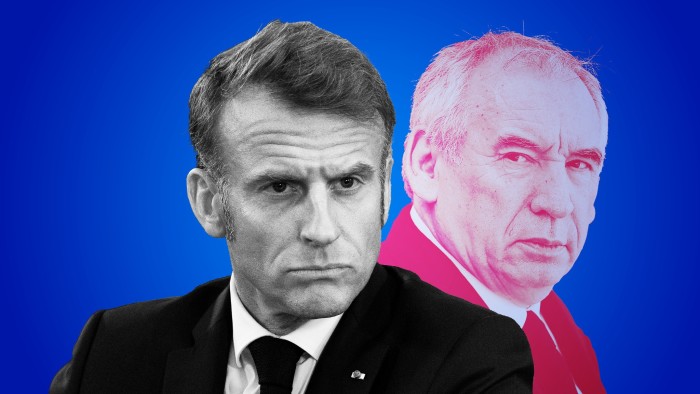
Emmanuel Macron’s options narrow as his prime minister is on the brink
Emmanuel Macron is grappling with narrowing options as his fourth prime minister in two years hangs on by a thread and markets are alarmed by France’s political and fiscal crisis.
People close to the French president say he is already preparing for the likelihood that the premier, François Bayrou, will lose a confidence vote next month. Bayrou earlier this week took politicians and markets by surprise by calling for the vote, in an attempt to bolster parliamentary backing for his strategy on how to rein in the country’s ballooning deficit.
Although Macron is still publicly urging lawmakers to support Bayrou in the September 8 vote, he is also consulting allies over next steps, including options for a new prime minister able to get a 2026 budget adopted without further political turmoil.
None of Macron’s options are particularly appealing if the opposition follows through on their promise to topple Bayrou. He can name another prime minister from his own camp or a rightwing politician to try to maintain the same strategy. Or he can switch tack to name a moderate leftist, such as a Socialist, knowing that they will undo some of his reforms.
In no scenarios would any of these governments enjoy a parliamentary majority, so Macron could ultimately try to break the deadlock by calling again for new elections.
The president, whose second and last term ends in mid-2027, has sought to shift the blame on the opposition — particularly the key swing blocs of Marine Le Pen’s far right and the Socialists.
“It is up to the political parties to rise to the occasion by finding ways of compromise and stability, as is the practice throughout Europe,” Macron told Journal du Dimanche newspaper on Tuesday. “If they were to choose disorder, they would bear a heavy responsibility in the current delicate geopolitical moment.”
But the crisis is largely one of Macron’s own doing.
Since he called and lost parliamentary elections last year, his centre and right-wing alliance has been left without a majority in the assembly. His first pick for premier, the conservative politician and former EU Brexit negotiator Michel Barnier, was in office for just three months before being toppled over his unpopular 2025 budget.
Bayrou managed to get a slightly watered down budget adopted in February because he convinced the Socialists to abstain, but they have already said they will not repeat the favour on his new proposals for €44bn of spending cuts and tax rises in the 2026 budget.
Le Pen and far-left leader Jean-Luc Mélenchon have even called on Macron to resign to pave the way for an early presidential vote, but he has repeatedly vowed he would never do so.
An Elabe opinion poll published on Tuesday showed 67 per cent wanted Macron to resign, while 72 per cent of respondents did not want Bayrou to stay on.
Erwan Balanant, an MP from Bayrou’s centrist Modem party, said voting out the prime minister would thrust France deeper into crisis. “If the government falls on September 8, we’ll find ourselves exactly in the same situation as we were in last July,” he said in an interview. “The question now is: who is ready to take responsibility today to find solutions?”
Opposition parties that hold at least 330 seats out of the 577 have said that they will not back Bayrou, so his premiership will end unless he secures an unlikely U-turn from them. Bayrou on Wednesday offered to meet with party chiefs next week to negotiate the deficit-cutting plan.
The looming election battle to succeed Macron in 2027 complicates the choice of a new prime minister as politicians are increasingly unwilling to be seen as helping an unpopular president and enabling spending cuts.
If Macron wants to attempt continuity he could pick a new prime minister from his own centrist party, or an allied party like former prime minister Edouard Philippe’s Horizons or the conservative Les Républicains party (LR), which all are represented in the current government.
Macron has previously wanted to tap Sébastien Lecornu, a longtime ally who was a former member of LR and is now serving as defence minister, but the opposition may see that as a provocation given Lecornu’s closeness to Macron.

A risk for Emmanuel Macron is that instability drags on so long that the budget for next year cannot be passed by late December © Yara Nardi/AP Macron can also try a new configuration that he has taken great pains to avoid since last summer’s snap election — naming a moderate leftwing figure as prime minister.
A leftwing electoral alliance came in first in last year’s legislative election, giving them a claim to the premiership, but Macron instead chose to ally with the smaller right-wing LR party, largely because he was loath to see his pro-business economic agenda picked apart.
Philippe Brun, a senior Socialist MP, told the FT it was time for the left to be given a shot. “The only government that has a chance of surviving now is one we are running, but it would require securing an agreement with the centre not to topple us,” he said. “Macron cannot name someone from his own camp.”
Socialist party leader Olivier Faure last year threw his hat into the ring for premier and is said to be still eager for the job. Another option would be Bernard Cazeneuve, a former Socialist politician who previously served as prime minister under president François Hollande.
Geoffroy Didier, senior member of the conservative LR, told the FT that the party was unlikely to join a government led by a left-wing prime minister, but that they could be convinced not to censor them.
“That would be the fair middle ground, if [Macron] decided to turn to” the left, he said, adding that it was “idealistic” to expect another LR prime minister after Barnier.
Political volatility has already hampered efforts to begin chipping away at a national deficit that reached 5.8 per cent of GDP last year — far above EU limits of 3 per cent of GDP. Debt servicing costs are forecast to hit €66bn this year to become the government’s biggest area of spending, ahead of education and defence.
The risk for Macron is that instability drags on so long that — for the second year in a row — the budget for next year cannot be passed by late December. Investors have already pushed up the interest rates they demand to buy French government bonds, and both the bond and equity markets wavered this week after Bayrou’s announcement.
Some see another snap legislative vote as inevitable. “As long as there is no dissolving of parliament, we will have governments unable to pass laws, even ones as crucial as a budget,” said Didier.
An inveterate risk taker, Macron may agree that is the only way out of the impasse. “It is not his wish, because the Assembly is legitimate and reflects the country in both its diversity and its divisions,” said a person in his entourage. “But he has always said that he would not rule out using the power granted to him in the constitution.”
Continue Reading
-
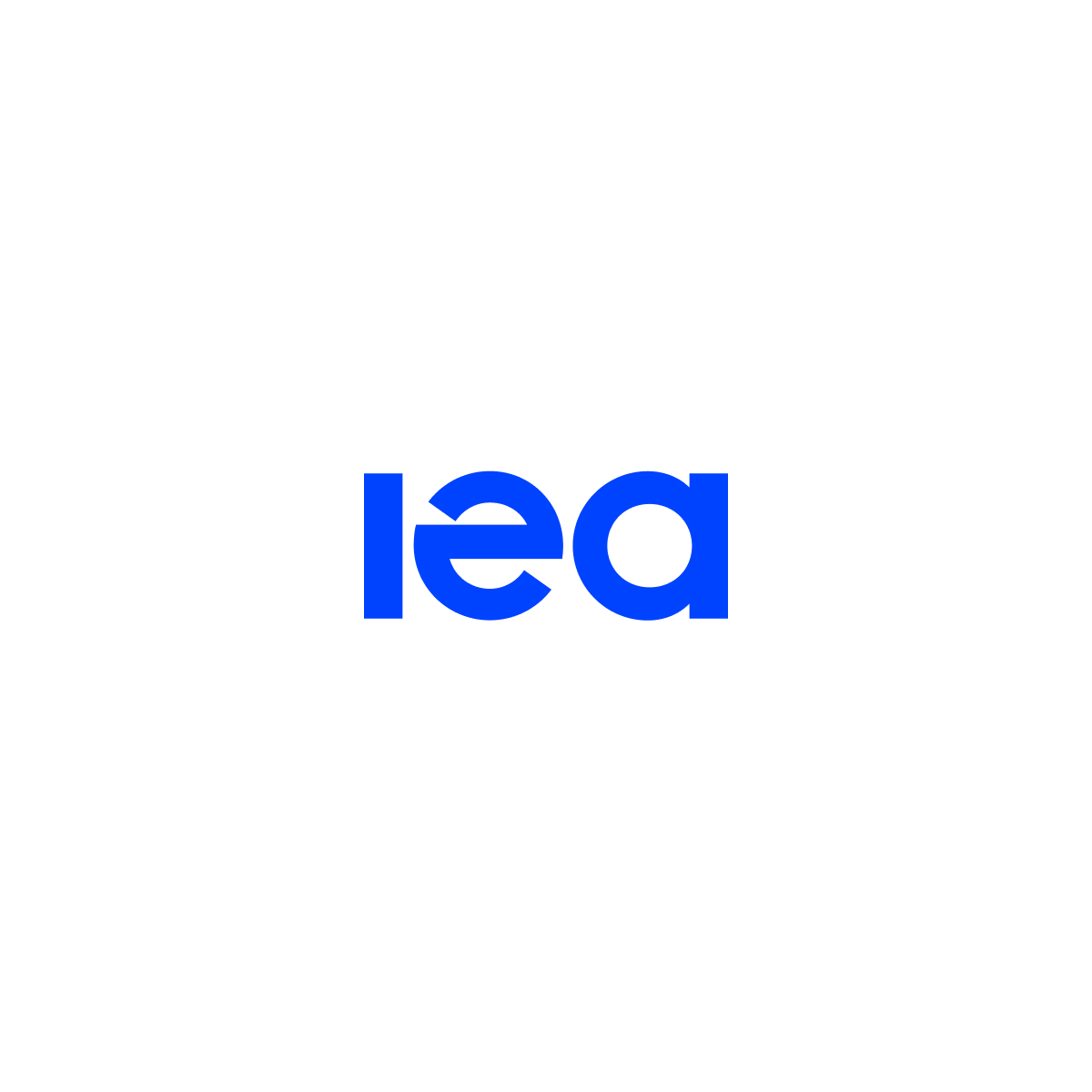
New episode of Everything Energy podcast explores how to expand clean cooking access in Africa – News
A new episode of the IEA podcast Everything Energy looks at efforts to increase access to clean cooking solutions in Africa, which offer the potential to tackle a major energy, health and development issue that afflicts around 1 billion Africans today.
Today, four in five families in African countries cook their daily meals with fuels such as wood, charcoal, kerosene and waste over open fires or basic stoves. This contributes to over 800,000 premature deaths each year due to household air pollution – mostly among women and children. It also has significant impacts on gender equality and economic opportunity.
In the episode, which is now available on Apple Podcasts and Spotify, we hear from Syrine El Abed, IEA Africa Programme Officer, and Dan Wetzel, Head of the IEA’s Tracking Sustainable Transitions Unit. They explain what a lack of clean cooking supplies means in practice, highlighting what the latest data tells us about the situation. They also discuss what more can be done to close the access gap – and why the energy sector is key to solving this challenge.
The IEA launched the new version of the Everything Energy podcast earlier this year. The series offers insights on issues at the centre of the global energy dialogue through conversations with IEA experts.
Previous episodes of the podcast cover why global energy demand is surging, the vast potential of geothermal energy, the comeback of nuclear energy, how energy will shape the future of AI (and vice versa), what’s next for electric cars and trucks, key energy investment trends, the forces shaping oil markets, batteries, and the air conditioning boom.
Continue Reading
-
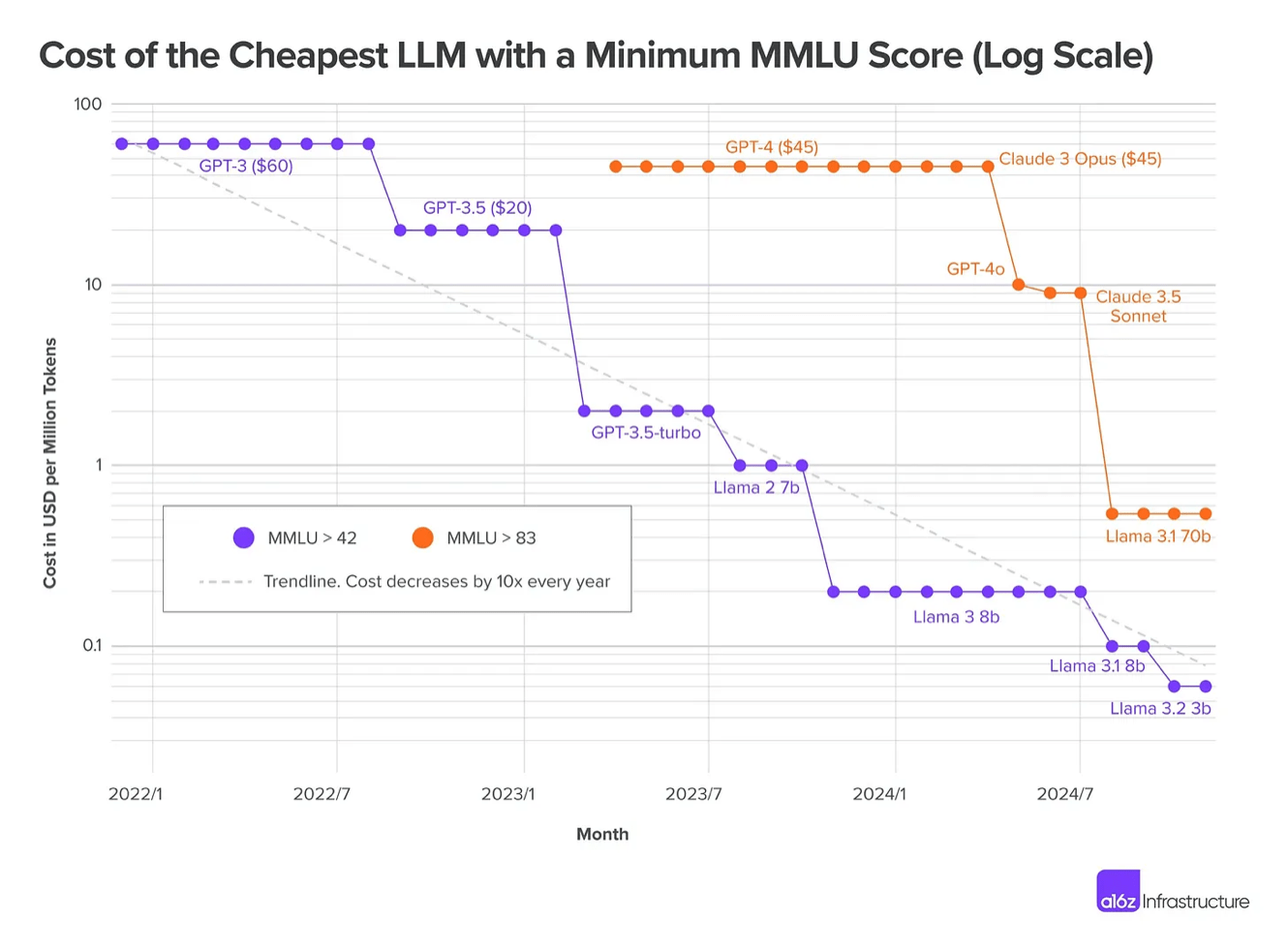
Nvidia Earnings, Moats and China, Nvidia vs. the AI Labs – Stratechery by Ben Thompson
Nvidia’s earning continue to be governed by supply — and reasoning models make that even more the case. Plus, why Nvidia is so desperate to get back into China.
Subscribe to Stratechery Plus for full access.
$15 / month or $150 / year
With Stratechery Plus you get access to the subscriber-only Stratechery Update and Stratechery Interviews, and the Sharp Tech, Sharp China, Dithering, Greatest of All Talk, and Asianometry podcasts.
Stratechery Update
Substantial analysis of the news of the day delivered via three weekly emails or podcasts.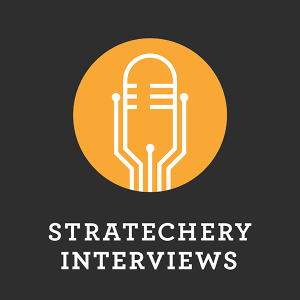
Stratechery Interviews
Interviews with leading public CEOs, private company founders, and discussions with fellow analysts.
Dithering
A twice-weekly podcast from John Gruber and myself: 15 minutes an episode, not a minute less, not a minute more.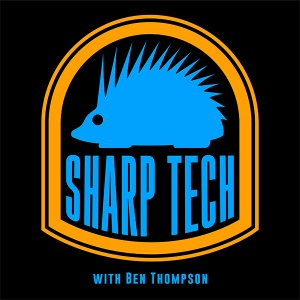
Sharp Tech
Andrew Sharp and myself discuss how technology works and the ways it impacts our lives.
Sharp China
A weekly podcast from Andrew Sharp and Sinocism’s Bill Bishop about understanding China and how China impacts the world.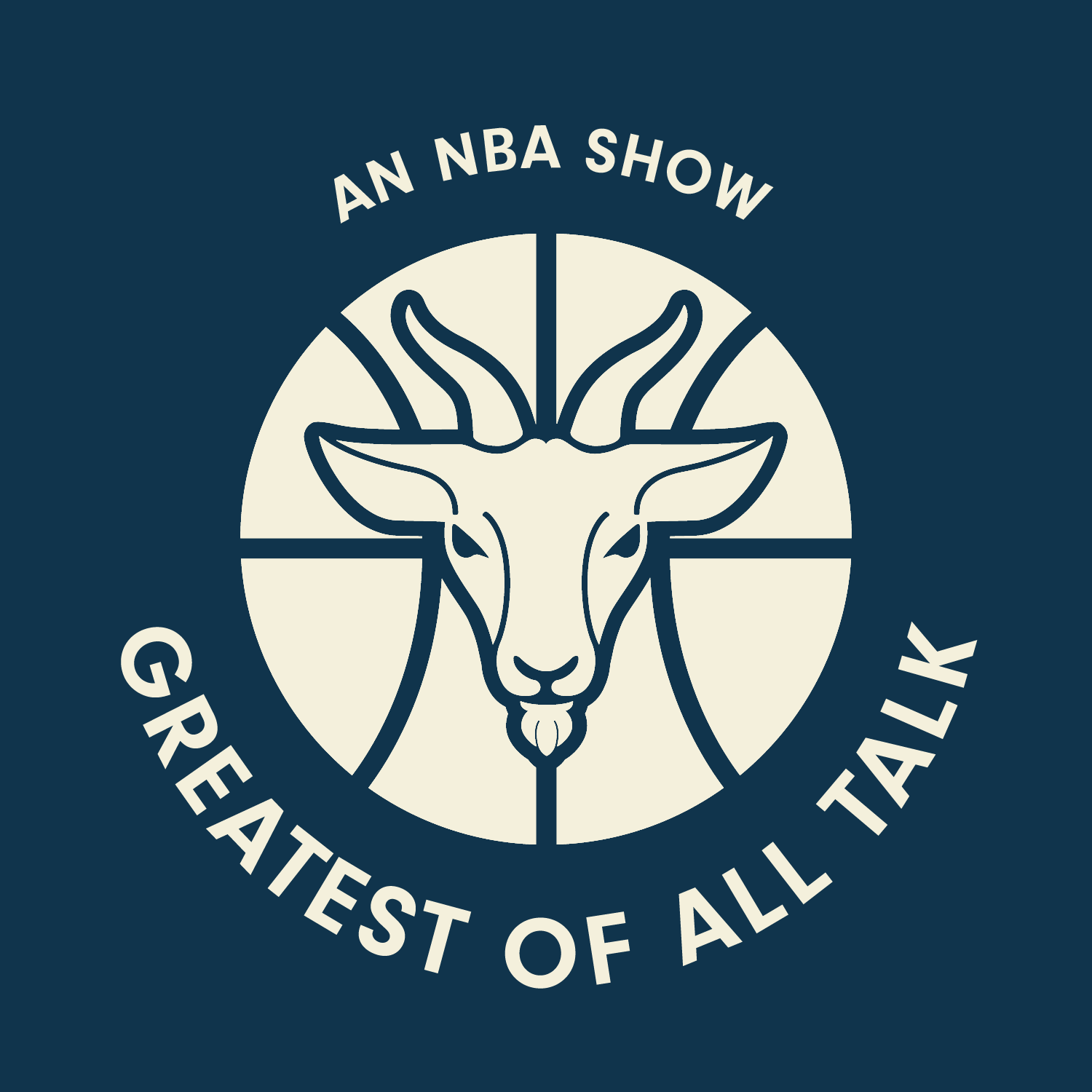
Greatest Of All Talk
A twice-weekly podcast from Andrew Sharp and Ben Golliver about the NBA, life, and national parks.
Stratechery Updates are also available via SMS, RSS, or on this site. Please see the Stratechery Update Schedule for more details about delivery times and planned days-off. Please note that all subscriptions auto-renew monthly/annually (but can be cancelled at any time). If you are interested in ordering and managing multiple subscriptions for your team or company, please fill in the form here.
Frequently-Asked Questions
How do I subscribe to the Stratechery Podcast?
Once you are subscribed, please visit your Delivery Preferences where you will find easy-to-follow instructions for adding Stratechery Podcasts to your favorite podcast player.
Can I read Stratechery via RSS?
Yes! Create a Stratechery Passport account, go to Delivery Preferences, and add your personalized RSS feed. Free accounts will have access to Weekly Articles, while subscribers will have access to the Daily Update as well.
Can I share a Stratechery Update subscription with a friend?
No, the Stratechery Update and Stratechery Podcast are intended for one subscriber only. Sharing emails, using shared inboxes, or sharing RSS feeds is a violation of Stratechery’s Terms of Service, and your account may be suspended or your RSS feed reset. Of course occasional forwarding of the Stratechery Update to interested friends or colleagues is totally fine.
Can I buy a subscription for my team?
Yes! You can purchase a team subscription here.
Can I switch to an annual plan?
Yes! Just go to your account page, choose the ‘Subscriptions’ tab, and click the Annual upgrade button. You will be charged immediately, with a prorated discount applied for the remainder of your current monthly plan.
Do you offer a student discount?
Stratechery is purposely kept at a low price — thousands of dollars less than other analyst reports or newsletters — to ensure it is accessible to everyone, including students.
Can you create a custom invoice that meets my government/company requirements?
I am happy to create an invoice to your specification for annual subscribers; however, it is simply not viable for me to offer this service to monthly subscribers. Therefore, if you need a custom invoice please subscribe or switch to an annual subscription and contact Stratechery.
June 1, 2021 Update: We are hoping to add native support for custom invoices to Passport; you can subscribe to Passport Updates to be notified when it is available.
Can I give a subscription as a gift?
Yes! To send a gift visit the gifts page.
Continue Reading
-

YA books championed by sisters Annabelle Chang, Alexandra Brown Chang
Annabelle Chang recommends books for a living. If you were to ask which one she finds most “criminally underrated,” she’d tell you it’s Katie Henry’s “This Will Be Funny Someday.”
“It is truly one of my favorite books I’ve ever read, not just my favorite YA books, just one of my favorite books that I think will really appeal to everyone,” Annabelle, 19, told The Times. “I read it at such an important time in my life. I was 16. The protagonist is also 16.”
“Annabelle’s love for this book actually inspired our entire family to read it,” her older sister Alexandra Brown Chang, 25, added. “I think it’s absolutely fantastic. I read it when I was 23, but I still resonate with it.”
Annabelle’s knack for recommending great young adult books led her to start an Instagram and blog during the COVID-19 pandemic. After seeing the positive response from readers of all ages, she began selling titles online and at pop-up events, including the Los Angeles Times Festival of Books. At 16, she opened a brick-and-mortar store in Studio City: Annabelle’s Book Club LA, the first young adult-focused bookstore in the country.
“I actually had my heart set on this one space in West Hollywood and I was so sad when it didn’t work out. The landlord at the time said that nobody would ever come to a bookstore, which I was very sad to hear,” Annabelle said. “But it all worked out for the best and I truly could not imagine a better place for the bookstore.”
At 16, Annabelle Chang opened a brick-and-mortar store in Studio City: Annabelle’s Book Club LA, the first young adult-focused bookstore in the country.
(Annie Noelker / For The Times)
On Sept. 2, Annabelle’s Book Club, which was recently featured in a scene in the film “Freakier Friday,” will host an extra special event: a launch party for her sister’s debut novel, “By Invitation Only.” Inspired by Alexandra’s own experience as a “debutante dropout,” the coming-of-age story follows two seemingly different female protagonists, Piper and Chapin, whose worlds collide at the elite La Danse des Débutantes in Paris. Together, Annabelle and Alexandra strive to amplify young adult narratives.
“Historically, YA hasn’t been taken as seriously as it should be, but I think we are at a moment where that is changing and people are really recognizing the power of these stories,” Annabelle said. “They’re impactful for readers of all ages, and they address universal themes and are just incredibly important for everyone.”
“I’ve wanted to write a young adult novel for a very long time, and I think that coming-of-age stories have pretty much proven to be evergreen because every generation seems to be finding new ways to tell them,” added Alexandra, who graduated from Stanford in 2022. “I think that we don’t really come of age once. We keep coming of age because every single new stage of life, whether it’s going to college or experiencing your 20s, it forces you to reevaluate who you are and who you want to be.”
Annabelle and Alexandra grew up in a literary household. Their mom, Amanda Brown, wrote the 2001 book “Legally Blonde,” which was later adapted into the Reese Witherspoon-starring blockbuster and a Broadway musical. The girls recall their mom and dad, technology investor Justin Chang, reading to them every night, which helped inspire their love for books and storytelling. Among Alexandra’s favorites were “Eloise,” “Madeline” and “Sweet Dream Pie.”
“I loved ‘Pinkalicious,’ which I think makes sense as the bookstore is also very pink,” Annabelle added. “It’s always been my favorite color and one of my favorite stories to this day.”
“I’ve wanted to write a young adult novel for a very long time, and I think that coming-of-age stories have pretty much proven to be evergreen because every generation seems to be finding new ways to tell them,” said Alexandra Brown Chang.
(Annie Noelker / For The Times)
At 14, Alexandra started the fashion blog Alex and Ella with her close friend, and later launched her own site, the Zeitgeist, where she continued to write about fashion, art, travel and more. While in high school, she interned for designer Zac Posen in New York, an experience she called “life-changing.”
“It really allowed me to learn so much more about fashion, the business side of fashion, but also the design aspect,” Alexandra said. “And it really helped me see fashion in all of its amazing ways and as an art form.”
In “By Invitation Only,” fashion takes center stage as the girls prepare for their debutante debuts. Especially through Chapin’s character, Alexandra argues that fashion should be treated as a serious craft — similar to young adult literature.
“When all of the debutantes are wearing custom gowns, it makes sense that all of them would have an incredible amount of time and thought put into them,” she said.
Earlier this month, Alexandra took part in the festivities at Annabelle’s Book Club for Bookstore Romance Day — an annual celebration of romance books at independent bookstores across the country. In addition to hosting perfume making and lipstick reading — which is like tarot card reading, but with lipstick — the store gave away an advance copy of “By Invitation Only.”
While there are romantic elements throughout “By Invitation Only,” the heart of the story lies in the complicated relationship between Chapin and Piper. Unlikely friendships are one of Alexandra’s favorite tropes, she said.
“Piper and Chapin come from completely different backgrounds when their lives unexpectedly collide in Paris, and they really do change for the better,” Alexandra said. “And I think that’s a great message that everyone could use right now, and it certainly is true for myself and so many of my closest friends, and I really value those friendships.”
Alexandra spent about five years writing her novel and sent several early drafts to her sisters, including Annabelle; Audrey, Annabelle’s identical twin; and 15-year-old Ames. “I was really excited to get their input as the target age demographic as well,” she said of her younger siblings.
After the launch at Annabelle’s Book Club, Alexandra will head to bookstores across the country to promote her book, including Kepler’s Books in Menlo Park and Book Passage in San Francisco. Meanwhile, Annabelle is getting ready for her second year at Stanford, where she plans to major in product design and minor in creative writing. Still, she continues to juggle her responsibilities as a student and a business owner.
“It is certainly a balance. I feel incredibly lucky that we have such a wonderful team at our store, who can run the day-to-day when I can’t be there,” Annabelle said. “I find myself going back quite often for events and meetings.”
Even as they pursue their individual paths, Annabelle and Alexandra savor every opportunity they get to collaborate with each other.
“I love that we’re able to spend even more time together and that we have this common interest,” Alexandra said. “It’s really special.”
Continue Reading